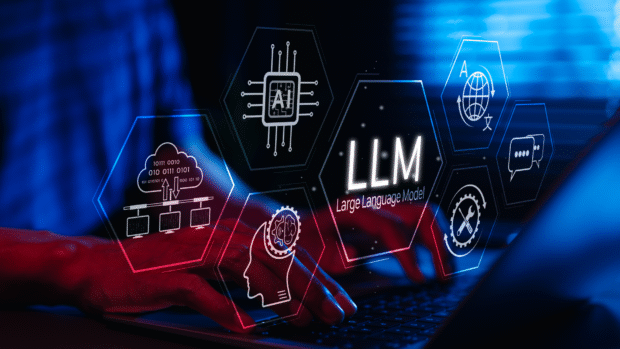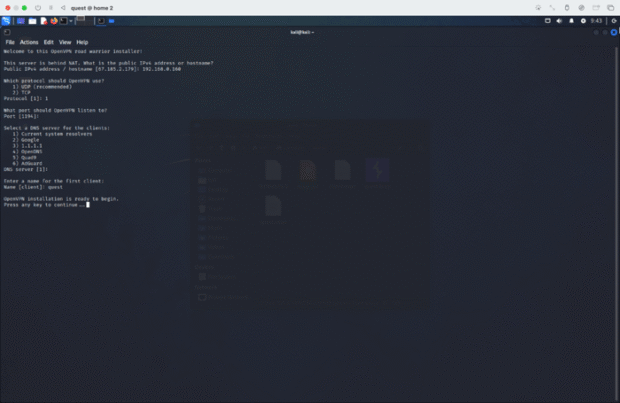
Financial frauds, including online scams, phishing, and identity theft, are on the rise in India. With the increasing digitization of financial services, cybercriminals are finding new ways to exploit vulnerabilities. This is where cyber forensics plays a crucial role in investigating and solving these crimes.
What is Cyber Forensics?
Cyber forensics involves the collection, analysis, and preservation of digital evidence to investigate cybercrimes. It’s used to track down criminals, recover stolen funds, and prevent future frauds.
Types of Financial Frauds in India
- Phishing Scams:
Fraudsters trick victims into revealing sensitive information like passwords and bank details. - Credit Card Fraud:
Stolen credit card information is used to make unauthorized purchases. - Ponzi Schemes:
Fraudulent investment schemes promise high returns but collapse when new investors stop joining. - Identity Theft:
Criminals steal personal information to commit fraud or access financial accounts.
How Cyber Forensics Helps
- Tracing Digital Footprints:
Cyber forensics experts analyze digital trails to identify perpetrators. - Recovering Data:
Deleted or encrypted data can often be recovered using advanced tools. - Preventing Future Frauds:
Insights from cyber forensics investigations help improve security measures.
Challenges in Cyber Forensics
- Rapidly Evolving Technology:
Cybercriminals are constantly finding new ways to bypass security measures. - Lack of Skilled Professionals:
There’s a shortage of trained cyber forensics experts in India. - Legal Hurdles:
Cyber laws in India are still evolving, making it difficult to prosecute offenders.
The Future of Cyber Forensics in India
With the government’s focus on digital security, the demand for cyber forensics experts is expected to grow.
For more on cybersecurity, read How to Stay Safe Online.
External Links:
About the author
Defend the Airport
[ad_1] Every day, millions of passengers depend on a vast, complex airport ecosystem to get from Point A to Point B. From airline check-ins and baggage handling to air traffic control and terminal operations, the aviation sector is an intricate web of interconnected third-party providers, technologies, and stakeholders. In this high-stakes environment, a cybersecurity breach is not a single point of failure, it’s a ripple effect waiting to happen. Cyber Threats Aren’t Just IT Problems – They’re Operational Crises When people think about airport cybersecurity, they often picture network firewalls at airline headquarters or secure software for booking systems. But the real threat landscape is far broader and far more vulnerable. If a catering supplier is hit with ransomware, the aircraft turnaround slows. If the baggage conveyor system is compromised, luggage piles up, delaying departures. If the security contractor experiences […]
Navpreet Pannu June 4, 2025
Securing LLMs Against Prompt Injection Attacks
[ad_1] Introduction Large Language Models (LLMs) have rapidly become integral to applications, but they come with some very interesting security pitfalls. Chief among these is prompt injection, where cleverly crafted inputs make an LLM bypass its instructions or leak secrets. Prompt injection in fact is so wildly popular that, OWASP now ranks prompt injection as the #1 AI security risk for modern LLM applications as shown in their OWASP GenAI top 10. We’ve provided a higher-level overview about Prompt Injection in our other blog, so in this one we’ll focus on the concept with the technical audience in mind. Here we’ll explore how LLMs can be vulnerable at the architectural level and the sophisticated ways attackers exploit them. We’ll also examine effective defenses, from system prompt design to “sandwich” prompting techniques. We’ll also discuss a few tools that can help […]
Navpreet Pannu May 14, 2025
LLM Prompt Injection – What’s the Business Risk, and What to Do About It
[ad_1] The rise of generative AI offers incredible opportunities for businesses. Large Language Models can automate customer service, generate insightful analytics, and accelerate content creation. But alongside these benefits comes a new category of security risk that business leaders must understand: Prompt Injection Attacks. In simple terms, a prompt injection is when someone feeds an AI model malicious or deceptive input that causes it to behave in an unintended, and often harmful way. This isn’t just a technical glitch, it’s a serious threat that can lead to brand embarrassment, data leaks, or compliance violations if not addressed. As organizations rush to adopt AI capabilities, ensuring the security of those AI systems is now a board-level concern. In this post we’ll provide a high-level overview of prompt injection risks, why they matter to your business, and how Security Innovation’s GenAI Penetration […]
Navpreet Pannu May 9, 2025
Setting Up a Pentesting Environment for the Meta Quest 2
[ad_1] With the advent of commercially available virtual reality headsets, such as the Meta Quest, the integration of virtual and augmented reality into our daily lives feels closer than ever before. As these devices become more common, so too will the need to secure and protect the data collected and stored by them. The intention of this blog post is to establish a baseline security testing environment for Meta Quest 2 applications and is split into three sections: Enabling Developer Mode, Establishing an Intercepting Proxy, and Injecting Frida Gadget. The Quest 2 runs on a modified version of the Android Open Source Project (AOSP) in addition to proprietary software developed by Meta, allowing the adoption of many established Android testing methods. Enabling Developer Mode The first step of setting up a security testing environment on the Quest is to […]
Navpreet Pannu April 28, 2025
Earn the US Cyber Trust Mark and Unlock New IoT Growth Opportunities
[ad_1] As an IoT product manufacturer, building consumer trust in the security of your connected devices is critical for driving sales and staying competitive. Fortunately, the Federal Communications Commission (FCC) has introduced a new program to help - the US Cyber Trust Mark. The Cyber Trust Mark is a new voluntary labeling program that is obtained by demonstrating the cybersecurity of your IoT products. By earning this seal of approval, you can demonstrate to your customers that your devices meet rigorous security standards and can be trusted to protect their personal data and connected home. Retailers like Best Buy and Amazon will be collaborating with the FCC to educate consumers on this new program and increase public demand for the Cyber Trust Mark. But achieving the Cyber Trust Mark isn't a simple process. That's where Security Innovation, a Bureau Veritas […]
Navpreet Pannu April 6, 2025
The Value of OT Penetration Testing
[ad_1] With the increasing cyber threats targeting operational technology (OT) environments, it's more important than ever to proactively assess and strengthen the security of your Industrial Control Systems (ICS). One of the most effective ways to do this is through an OT penetration test. What is an OT Penetration Test? An OT penetration test is a comprehensive security assessment that simulates real-world cyber-attacks against your ICS environment. Experienced security professionals, with deep expertise in both IT and OT systems, will attempt to gain unauthorized access and exploit vulnerabilities within your industrial control networks and devices. The team will provide you with a realistic understanding of your ICS security posture and the potential impact of a successful attack. The Benefits of OT Penetration Testing Uncover Hidden Vulnerabilities: Pen testers will identify vulnerabilities and misconfigurations that may have been overlooked by traditional […]
Navpreet Pannu April 6, 2025
Related
Defend the Airport
[ad_1] Every day, millions of passengers depend on a vast, complex airport ecosystem to get from Point A to Point B. From airline check-ins and baggage handling to air traffic control and terminal operations, the aviation sector is an intricate web of interconnected third-party providers, technologies, and stakeholders. In this high-stakes environment, a cybersecurity breach is not a single point of failure, it’s a ripple effect waiting to happen. Cyber Threats Aren’t Just IT Problems – They’re Operational Crises When people think about airport cybersecurity, they often picture network firewalls at airline headquarters or secure software for booking systems. But the real threat landscape is far broader and far more vulnerable. If a catering supplier is hit with ransomware, the aircraft turnaround slows. If the baggage conveyor system is compromised, luggage piles up, delaying departures. If the security contractor experiences […]
Navpreet Pannu June 4, 2025
Securing LLMs Against Prompt Injection Attacks
[ad_1] Introduction Large Language Models (LLMs) have rapidly become integral to applications, but they come with some very interesting security pitfalls. Chief among these is prompt injection, where cleverly crafted inputs make an LLM bypass its instructions or leak secrets. Prompt injection in fact is so wildly popular that, OWASP now ranks prompt injection as the #1 AI security risk for modern LLM applications as shown in their OWASP GenAI top 10. We’ve provided a higher-level overview about Prompt Injection in our other blog, so in this one we’ll focus on the concept with the technical audience in mind. Here we’ll explore how LLMs can be vulnerable at the architectural level and the sophisticated ways attackers exploit them. We’ll also examine effective defenses, from system prompt design to “sandwich” prompting techniques. We’ll also discuss a few tools that can help […]
Navpreet Pannu May 14, 2025
LLM Prompt Injection – What’s the Business Risk, and What to Do About It
[ad_1] The rise of generative AI offers incredible opportunities for businesses. Large Language Models can automate customer service, generate insightful analytics, and accelerate content creation. But alongside these benefits comes a new category of security risk that business leaders must understand: Prompt Injection Attacks. In simple terms, a prompt injection is when someone feeds an AI model malicious or deceptive input that causes it to behave in an unintended, and often harmful way. This isn’t just a technical glitch, it’s a serious threat that can lead to brand embarrassment, data leaks, or compliance violations if not addressed. As organizations rush to adopt AI capabilities, ensuring the security of those AI systems is now a board-level concern. In this post we’ll provide a high-level overview of prompt injection risks, why they matter to your business, and how Security Innovation’s GenAI Penetration […]
Navpreet Pannu May 9, 2025
Setting Up a Pentesting Environment for the Meta Quest 2
[ad_1] With the advent of commercially available virtual reality headsets, such as the Meta Quest, the integration of virtual and augmented reality into our daily lives feels closer than ever before. As these devices become more common, so too will the need to secure and protect the data collected and stored by them. The intention of this blog post is to establish a baseline security testing environment for Meta Quest 2 applications and is split into three sections: Enabling Developer Mode, Establishing an Intercepting Proxy, and Injecting Frida Gadget. The Quest 2 runs on a modified version of the Android Open Source Project (AOSP) in addition to proprietary software developed by Meta, allowing the adoption of many established Android testing methods. Enabling Developer Mode The first step of setting up a security testing environment on the Quest is to […]
Navpreet Pannu April 28, 2025
Essential Guide to Cyber Forensics for Modern Security Teams
Essential Guide to Cyber Forensics for Modern Security Teams In today’s digital world, cyberattacks are happening more frequently—and they’re getting smarter. Businesses, governments, and individuals are constantly under threat from hackers trying to steal data or cause disruption. That’s where cyber forensics comes in. If you’ve ever wondered how investigators trace a cybercrime back to the source, you're about to find out. What Is Cyber Forensics, Really? Think of cyber forensics like a digital detective job. Just like detectives collect clues at a crime scene, cyber forensic experts collect digital evidence after a cyberattack. Their goal? Figure out what happened, how it happened, and who did it. Cyber forensic specialists dig deep into computers, servers, emails, logs, and other data to find out where the breach started. This process helps organizations not only recover from attacks but also […]
Harshit bharti April 7, 2025
Kiren Rijiju: Why Earth Sciences minister Rijiju is upset with this European IT company |
[ad_1] Earth Sciences Minister Kiren Rijiju is reportedly upset with the French IT company Atos. Reason is said to be delay in the delivery of two supercomputers by the French company to Indian weather forecasting institutes. According to a report in news agency PTI, the Earth Sciences Ministry had ordered two supercomputers worth $100 million from French firm Eviden, of the Atos Group, last year to enhance the computing capabilities of its institutions -- the National Centre for Medium Range Weather Forecasting (NCMRWF) and the Indian Institute of Tropical Meteorology (IITM)."I am more upset because the target we set was December. The Union Cabinet had already approved purchasing the supercomputer. We have only four petaflop capacity. We want to install up to 18 petaflop capacity," Rijiju told PTI in a video interview.He said that the French company ran into some […]
Harshit bharti April 7, 2025










Be the first to leave a comment